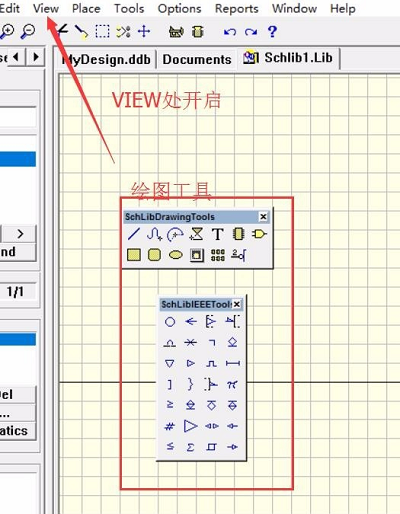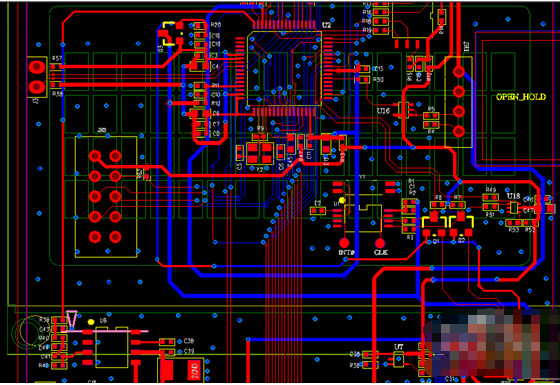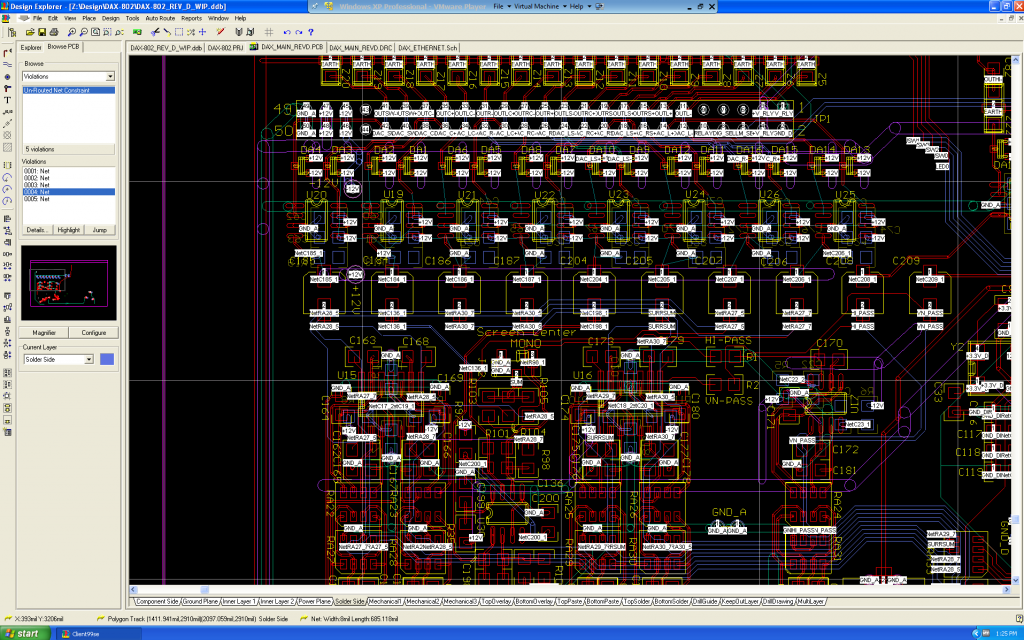

In the middle is the design window where we actually create our systems. This consists of placing symbols that represent th e individual components in the design and connecting their individual connections, or nodes, to one another. We can now create the schematic that will describe our circuit. Save often – both Windows and Protel can be buggy at times, and the last thing you want to do is lose over an hours work because of a crash. We'll stick to the pattern and call it Tutorial.sch. Always rename your files to something more descriptive (HC11 IO.sch, Power Regulation.sch, etc.) - this will make it easier to keep track of what information is in each document. The Database has its own internal File System – go into the Documents Folder, select File/New and create a new Schematic Document.

Maximize the window – it makes it easier to have one title bar. In this case, we'll call it Tutorial.DDB. DDB) that contains all the parts of your design. Use a MS Access Database and give it a name – this will create a Design Database file (extension. First we must create an overall database that will contain all the individual components of the design – the Schematics that describe the circuit, the PCB Designs that physically layout the components and their connections, and other assorted files. This tutorial covers the creation of a sample design using Protel 99SE, and its preparation to be milled out by the T-Tech. The latter process is unable to make complicated designs, but it both quick and cheap. MIL also has the ability, through a T-Tech Quick Circuit, to make single and double sided circuit boards PCBs out of copper-plated sheets of insulating material. The resulting PCB design can then be sent to a company for a professional board with silkscreens, multiple layers, etc. At the University of Florida, we have access to Protel 99SE for these functions. Several Electronic Design Applications (EDA) exist to both create schematics of a circuit and transfer them to a working PCB layout.

Developing Printed Circuits Board using Protel 99SE Most designs today are built on Printed Circuit Boards (PCBs), which consist of multiple layers of electrical copper and insulating material sandwiched together.


 0 kommentar(er)
0 kommentar(er)
